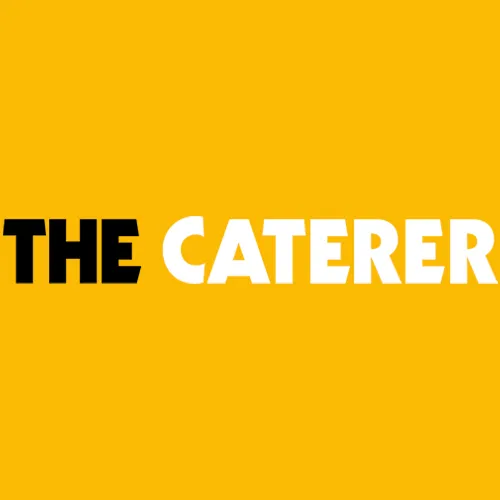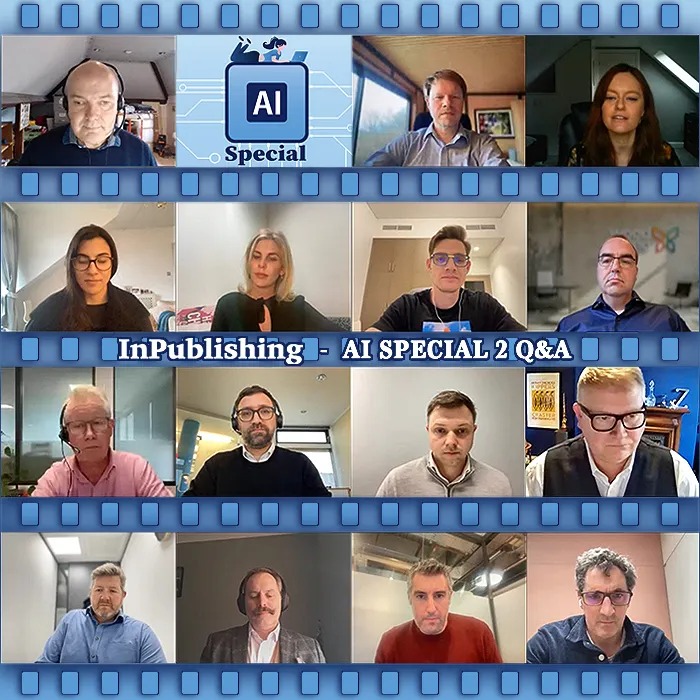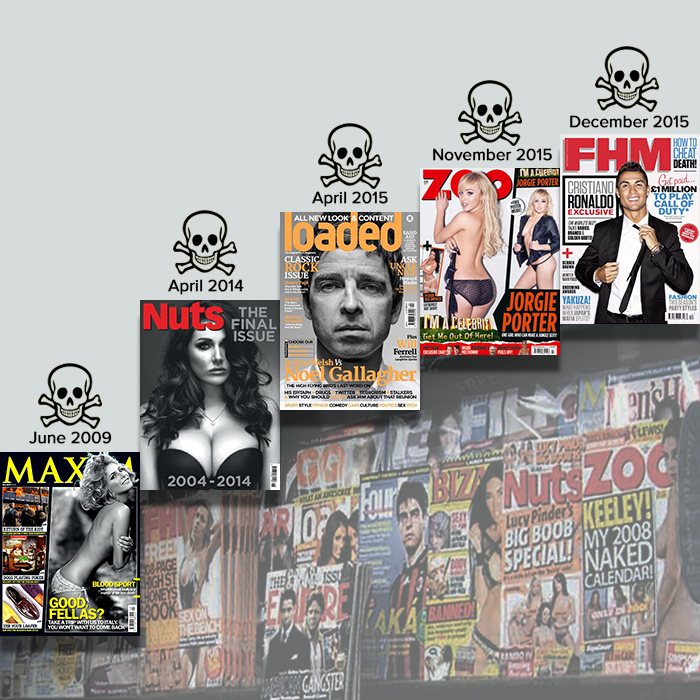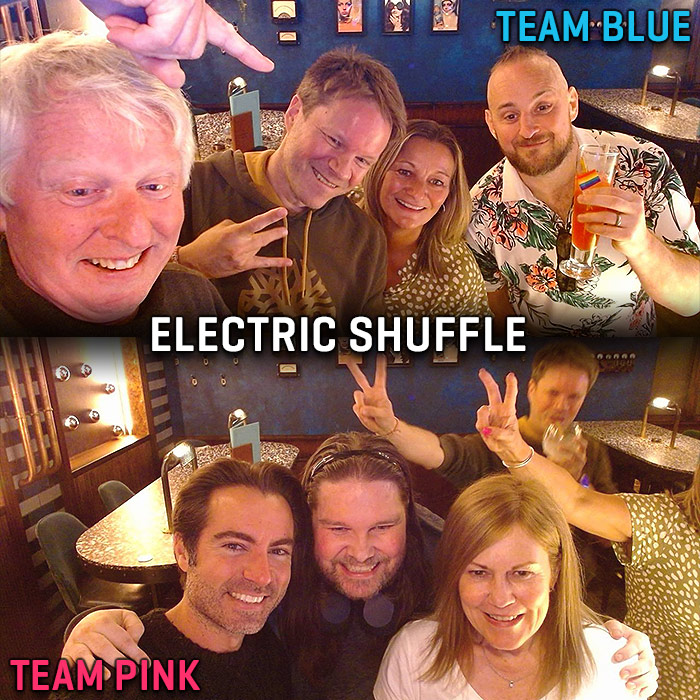The Increasing Importance of Editorial Voice when competing for eyeballs

Let’s face it - in the content publishing world - competition has never been stiffer. Never have there been quite as many agencies and organisations involved. And most consumers are not properly aware of just how much news and features content is outsourced and handled by third party agencies, PR organisations and lobbyists - who work on behalf of major corporations and political organisations.
Most published research these days is funded by big business - seeking to influence its target audience. Classic historic example of this include Keloggs funding research in the post-war years - which proclaimed that breakfast was the most important meal of the day.
"In fact a lot of today’s headlines have some kind of corporate sponsorship and spin to them"
As a news consumer you need to be able to read between the lines and filter out the prevalent bias - to get to the roots and purpose of the story.
I control the editorial side of both Affino.com and GuitarPedalX.com - and every day I get several propositions for all manner of contributed articles - which don’t fit in with the existing content for the brands. People come to me offering up articles on mental health and wellness and all manner of tangential angles which have nothing to do with the core positioning or strategies of those sites. While most newspaper / news sites out there are heavily peppered with third party and outsourced content - sometimes very obvious ’more stories’, but a lot of the time relatively subtle or not signposted at all, when they’re are in practice advertorial content.
Most of the inbound content has little or no relationship to the brand, or towards the core editorial policies, content, and philosophies already in place. On the whole it simply feels highly speculative and opportunistic. It’s a little akin to those generic boilerplate sales propositions which don’t hone in on anything actually relevant to your business.
Editorial Policy
For both the sites I lead on, there are very specific editorial policies in place - to support each of those businesses. At the root there is a strategy for each - based on selected keywords, themes and topics.
For Affino.com all of the articles are a mix of promotional sales funnel, or soft power / positive brand association. The site is not above a small amount of 'critique' if we feel certain players within the sector are breaking rules (laws) and behaving dishonestly. Meaning there is some targeted critical content. While for GuitarPedalX.com - the policy is to be entirely positive - which means no negative reviews. Anything that is heading for negativity is simply curbed and cut from publication - so that the content is entirely positive and life-affirming as such.
So both sites have somewhat different Editorial Policies - in terms of what kind of content gets included or left out.
Philosophy and Stance
While the world is becoming increasingly polarised and separatist - there are a declining number of news media actually providing a fair and balanced account of proceedings. Despite the best intentions of the editorial code - many news sites are neither fully fair nor balanced - but rather lean towards different policy centres - essentially government-influenced, and the counter-culture.
"There is a UK News mandate about news having to be fair and balanced - while it is quite evident that the majority of news out there is somewhat biased."
For Affino.com and GuitarPedalX.com - we pretty much stay away from politics - while we will on occasion highlight harmful economic and social policies. For most businesses it's important really to stay out of politics as that area is so heavily emotionally charged and will always likely alienate part of your target audience.
Philosophically though you have to take a stance of sorts, and have to have clear publishing guidelines as to what are suitable topics for inclusion. There's a big part of Corporate Social Responsibility in there as well - and you need to underline your policies on commerce, economics and the environment - without unnecessarily agitating your audience.
Authority
All the best writing comes from personal experience and direct first-hand acquired knowledge - and it does you credit that said expertise comes from in-house.
"Authority is gained from consistent application of Editorial Policy, Expertise and Experience."
That should be a core tenet to your publishing activities that everything is directly related to the principal people involved in the business - and indeed their principles!
This is why personal accounts and case studies are so important - and they can never be written quite so well by individuals who weren't properly present for the proceedings and who aren't 100% au fait with the prevailing editorial policy and philosophy.
As with marketing it is consistency and continuity which is important. If you start flip-flopping on issues you will only serve to confuse the audience. Consistency and clarity is all important.
The Inverse Pyramid
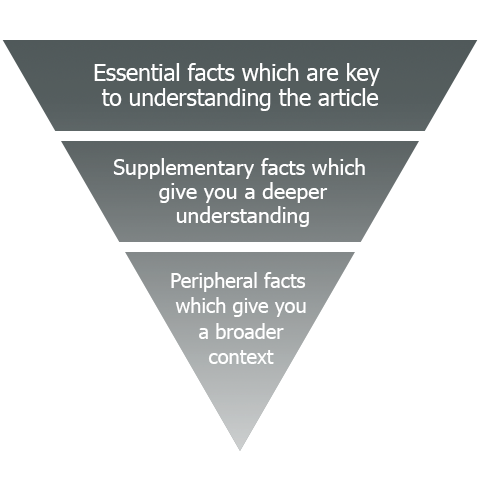
The best editorial endeavours are to cram all the salient points into the first few paragraphs of the piece - and then increasingly add more contextual details and ambience - to the extent that if a reader gives up after reading just the first 2 or 3 paragraphs - then they have already absorbed all the essentials - meaning the rest is just gravy really.
This is a very important technique which I certainly apply to the most intentionally poignant pieces. At other times a narrative arc can make proceedings a little more interesting. But the modern paradigm is that people are increasingly busy, and are increasingly unlikely to get to the end of any piece more than a few paragraphs long.
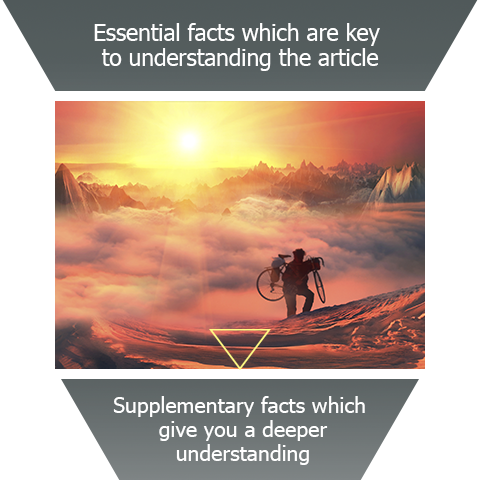
This means that you should not include some key critical salient facts in the tail-end of the content piece - all that needs to be front-loaded really for maximum impact.
Beyond the main attention-grabbing image, news print images have often been used to add texture, detail or simply to fill up column space. On mobile, images take a different significance. For mobile we use them as motivation to read on. That is to say if you cannot fit all the most pertinent details into the first two/three paragraphs you need to motivate the reader to carry on down the article.
Those strategic images need to be sufficiently arresting and interesting for the reader to want to read the following description and follow-on text - thus the use of images for mobile formats takes on a much more strategic purpose than would be the case for print.
Native Content
All of Affino.com and GuitarPedalX.com is fully natively originated by us - Affino.com is largely myself and CEO Markus Karlsson, while GuitarPedalX is entirely a personal / personality project. For GPX in particular it makes no sense to have third party content - as it is in effect a personality column - people tune in for those personal opinions and recommendations - they follow the individual, not the concept really - much in the same way as those typical newspaper columnists and more modern day 'instafluencers'.
GPX has a very streamlined focus - which is increasingly effects pedals only - it's been a while since there were features on amps and guitars. For Affino.com the policy is slightly broader - as there is a fair amount of Soft Power content on the site - all written by us - and all within strict editorial guidelines.
It's a real boon to have in-house content as you can that much better maintain the highest quality standards and consistency in voice and impact. You can still include some third party opinions where applicable - but those have to be within the context of the core editorial policies and strategies.
Formulae
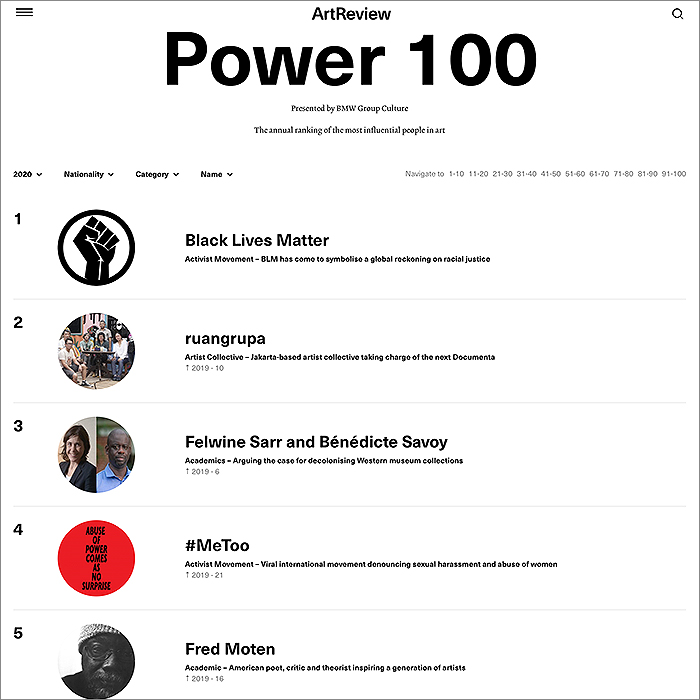
Each site has certain formats and formulae for key types of articles. Buzz Feed ran away with List Mania - where for a period most articles appeared to be some sort of top 10 or top 20 list of favourite memes. While there are plenty of other ways to stamp content with your own identity, Sunday Times is a great example with its various supplementary special edition issues - the annual Rich List, Universities/Schools Editions, Best companies to work for etc.
Having Awards is another great way to cement your position, as are those 'Most Influential' Lists like ArtReview's Power 100 - or '100 Most Influential People in Art'. Affino CEO Markus Karlsson has stamped his own identity with his 'Affino Intelligence Briefing' Webtrends articles, while GuitarPedalX is probably best known for its '12 Degrees of Saturation' style of articles.
It is important for all publications to have key events and occasions within the publishing calendar where they can expect to gain more traction and engagement at certain times of the year. Affino.com has its annual autumn 'Innovation Briefing', while Guitar Pedal X has its end of year overviews - which typically ensure large amounts of traffic to each site.
Visual Identity

The importance of distinctive high quality visuals cannot be understated. As that is another considerably weapon for enforcing identity and brand advocacy. Both Affino.com and GuitarPedalX.com are known for their distinctive and high quality visuals - which properly set them apart from their immediate competition and peers.
For Affino we put everything through an Aquamarine filter - albeit it's never quite as simple as that - and most visuals are multi-composite multi-dimensional visual metaphors. I for one put a lot of stock into selecting the most symbolically relevant imagery for each article - to illustrate visually the tone and tenor of that article - and ramp up its appeal.
The above Fishing Boat Visual is a classic example of a 5-part composite with multiple levels of meaning. In simple terms the rough seas reflect the 'Touch Going' concern of the article - while the boat is symbolic of audience capture, and the Net marker-floats are actually a trending line-graph! There are various other layers of symbolism in that visual - which I will leave open to interpretation.
Another strong take is the use of Logo Idents to underpin certain imagery - as per last year's Guitar Pedal X Christmas Greeting - below :

Consistency and Personality

To best build up an audience you will undoubtedly need to develop your own identifiable personality with attendant foibles - which should be consistently enforced to ensure proper continuity and ongoing audience engagement.
I feel that the best mediums though are the ones that are somewhat personality-based, after all we are living in the age of the Influencers. Editorial Tone of voice is largely about personality - which can then be pivoted, positioned, and underlined with consistently strong and directly identifiable imagery for all your brand content. For Affino and GPX the style of imagery and most content is distinct and readily identifiable with those brands!

Did you find this content useful?
Thank you for your input
Thank you for your feedback
Upcoming and Former Events
Affino Innovation Briefing 2024
Webinar - Introduction to Affino's Expert AI Solutions - Session #2
Webinar - Introduction to Affino's Expert AI Solutions - Session #1
PPA Independent Publisher Conference and Awards 2023
Driving business at some of the world's most forward thinking companies
Meetings:
Google Meet and Zoom
Venue:
Soho House, Soho Works +
Registered Office:
55 Bathurst Mews
London, UK
W2 2SB
© Affino 2025

